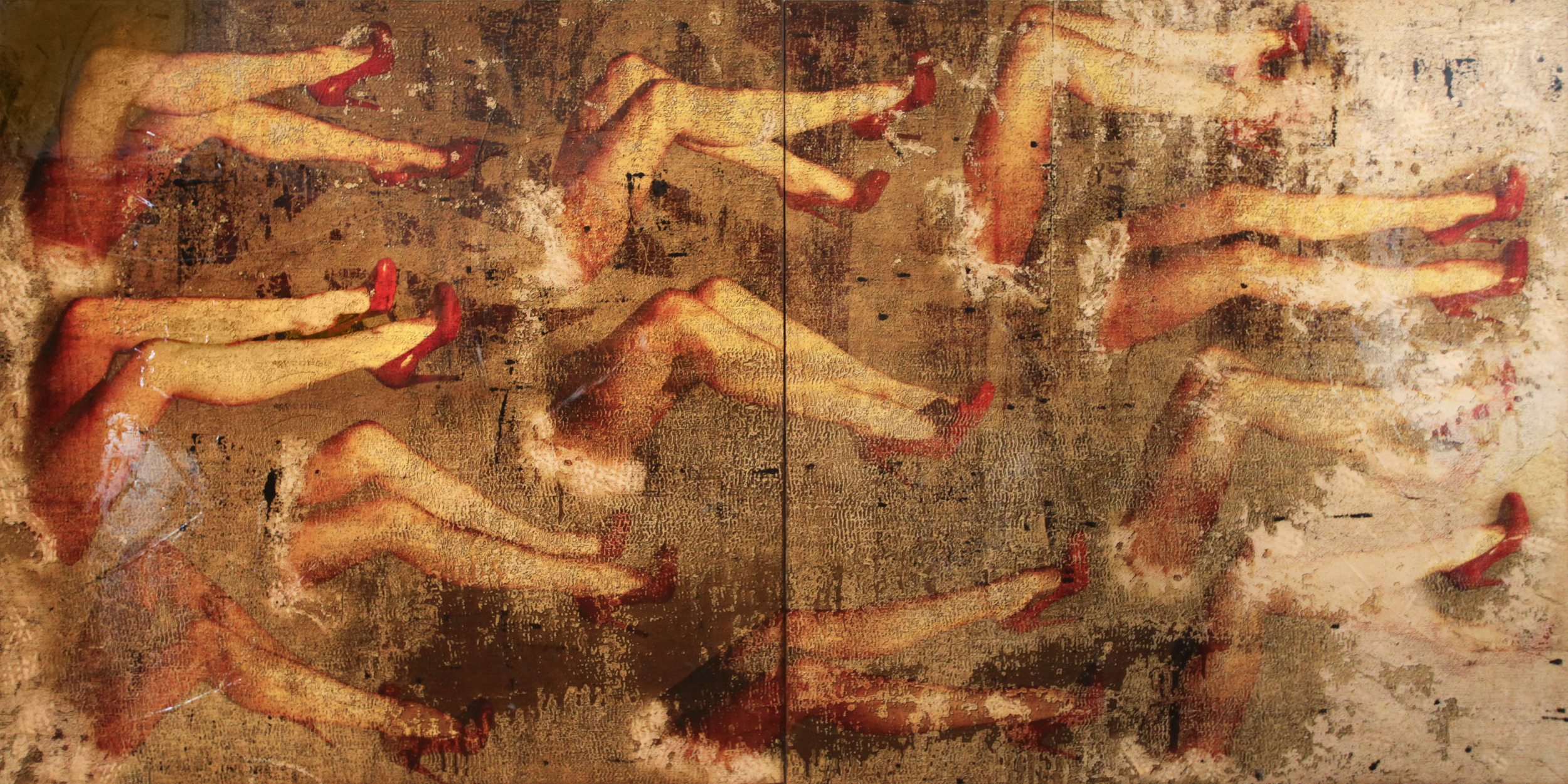I Can See You / Mixed Media
"22 Legs", Mixed Media on two panels, 2015, 48" x 96"
"I Can See You", Mixed Media on panel, 2015, 48" x 48"
"Behind the Screen", Mixed Media on two panels, 2015, 24" x 48"
"Celebration", Mixed Media on panel, 2015, 24" x 48"
"Two Legs", Mixed Media on panel, 2015, 48" x 48"
"The Writings on the Wall", Mixed Media on panel, 2015, 48" x 48"
"Fakes", Mixed Media on panel, 2015, 24" x 36"
"Six Legs", Mixed Media on panel, 2015, 48" x 24"
"Ripped Bills", Mixed Media on panel, 2015, 48" x 48"
"Obscured", Mixed Media on 5 connected panels, 2015, 18" x 18" ( Sold )
"Emotions", Mixed media on 16 Panels, 2015, Each Panel is 6" x 6" (Sold)
Judith Kindler explores the cultural need to leave one’s mark or art through graffiti appropriating public places in this series of work entitled "I Can See You". Through her photography based mixed media work, she adds her own personal art adding to the histories of walls and surfaces photographed in Venice Italy by the artist years before. She poses the question "If by leaving one’s mark can we actually be seen?."
The work questions the tangential "legitimate" or "legal" graffiti of murals, political and legal bills posted on buildings juxtaposed by "illegal" graffiti the cultural reflection of the day, expressed through tagging as a way of suggesting ownership or power over a public or non public environment or the more developed artistic expressions as obfuscated by the proliferation of images that border on extraordinary art. Through questioning the morality of all graffiti the artist challenges us to look at it from a historical, psychological and cultural point of view.
In a previous essay on the original Venice walls photography by the artist entitled "Surface" the artist talks about the history and cultural reflection. "Graffiti is believed to originate in Italy. The origin of the word comes from the Italian "graffito," to mark or scratch on a surface. Evidence of graffiti was found on ancient ruins, such in as the Catacombs of Rome and on the walls of Pompeii. In contemporary graffiti, there is a hierarchy of markings; a graffiti etiquette of sorts. A more profound or creative mark can go over a lesser tag or mark. The idea of appropriation of property is a central theme for the graffiti artist, and that the property is in public view is important. There is a need to draw attention to a viewpoint or an image or a tag representing the artist’s identity. I felt that by capturing on film these marks and the history of worn surfaces, I was appropriating the appropriated." In this body of work "I Can See You" now, Kindler leaves her own mark adding her own signature imagery of both innocent and provocative women and girls, becoming part of the accumulative story told on these walls.
Kindler stated "The worn surfaces of buildings also became a major part of my attention in Venice. The painted and repainted, worn and deteriorated surfaces built so many years before tell the story of the transitional nature of life; we, too, are becoming worn out; we, too, have our scars. Many of the photographs I have captured speak to cultural ambivalences, those contradictions that happen, for example, when within the graffiti the word "assassin" happens to fall next to an embedded shrine of Mary and the Christ child. The unconscious combinations of things, words and emotions that happen over time, played out on these surfaces, are unknowing collaborations. Even the images of objects randomly staged in windows bring surprising comedy, as well as ambiguity.
"This moment in time in Venice reflected off surfaces that have survived many ages and have witnessed many postings and heard many voices intrigues me. The city that appeared never to change, now appears not only to change, but struggles to hide it. I became absorbed with the idea of time and change and the need for each of us to leave a mark on something in life."
Not surprising for Kindler, an artist who has painted most of her life, these new mixed media works go beyond the combination of the artist’s photography to the painted additions of marks, tags, texture, sharing the richness and depth developed over months, years, centuries by many artists and now she is part of the collaboration.










